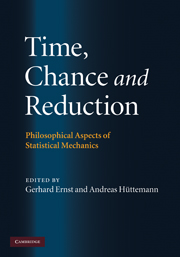8 - The crystallization of Clausius's phenomenological thermodynamics
from Part III - Reduction
Published online by Cambridge University Press: 04 August 2010
Summary
Introduction
The (metatheoretical) structuralist program for the reconstruction of scientific theories (in the following referred to as ‘structuralism’) allows for the performance of several metatheoretical tasks, among them: (a) precisely explicating the inner structure of any given ‘textbook’ theory in all its complexity; (b) making a clear distinction between different theories that in standard expositions are usually not clearly distinguished from each other, and identifying their intertheoretical relationships; (c) reconstructing their evolution in historical time. The present essay applies the structuralist methodology to the analysis of two writings of the German physicist Rudolf J. Clausius on thermodynamic phenomena published in the middle of the nineteenth century. Conventional historiography interprets these writings as the presentation of a first well-founded theory of phenomenological thermodynamics. However, as our analysis will show, Clausius actually constructed in his papers three different theories – each of them with its own identity, though of course related to each other.
The essentials of the structuralist representation of theories
Structuralism (without this name) was initiated by the pioneering works of Joseph D. Sneed, The Logical Structure of Mathematical Physics (1971) and Wolfgang Stegmüller, Theorienstrukturen und Theoriendynamik (1973). However, the present chapter employs the more evolved conceptual tools and representation methods to be found in the joint work, An Architectonic for Science, by Wolfgang Balzer, C. Ulises Moulines, and Joseph D. Sneed (1987). For those readers who are not well-acquainted with structuralist ideas, a brief summary of them is laid out in what follows.
- Type
- Chapter
- Information
- Time, Chance, and ReductionPhilosophical Aspects of Statistical Mechanics, pp. 139 - 158Publisher: Cambridge University PressPrint publication year: 2010
References
- 1
- Cited by



